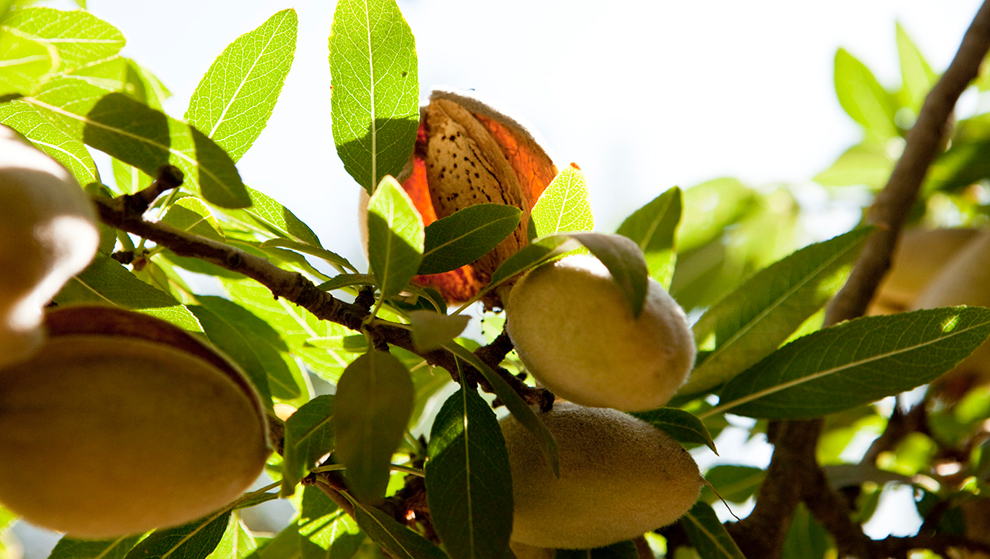
Dec 15, 2021Almond conference focuses on growing global demand
With water shortages, crippling port disruptions, soaring costs and price declines slashing profitability, almond growers face uphill battles that could test their viability in the coming year.
But they should not lose sight of their accomplishments, said Richard Waycott, president and CEO of the Almond Board of California, during the 2021 Almond Conference.
Amid what Waycott described as “the most tumultuous” year in recent history, almond growers in 2020 managed to set new records for production and shipments. He said he remains optimistic for the future, emphasizing growing global demand for the nut.
But Waycott also acknowledged tough times ahead, “maybe tougher than ever,” with implementation next year of the 2014 Sustainable Groundwater Management Act and pumping restrictions for growers.
Almonds now represent the state’s leading crop by acreage. Growers produced more than 3 billion pounds of the nut valued at more than $5.6 billion last year. The 2020 crop represented a 21.8% increase over 2019. But after another year of drought, 2021’s crop is expected to drop to 2.8 billion pounds, according to U.S. Department of Agriculture projections.
In market penetration, almond exports continue to post records—topping 2 billion pounds for the first time last year. That’s an increase of nearly 500 million pounds from 2019. The nut represents the state’s top agricultural export by value and remains the nation’s No. 1 specialty crop export.
“We should remind ourselves of what we’ve created,” Waycott said.
During Waycott’s “state of the industry” address at the 49th Almond Conference in Sacramento last week, the program was delivered as a mock news broadcast. Waycott and board Chairman Brian Wahlbrink played anchors, as board staff acted as “special correspondents” and gave reports from different locations via taped segments.
The reports provided an overview of where the industry stands and highlighted research, marketing and other efforts to further grow demand and keep almond farming viable.
Wahlbrink, who farms in Stanislaus and Merced counties, said almond growers have recovered from price declines before.
“The success and viability of almonds haven’t changed, but the world has,” he said. “There are so many chips stacked against us right now, sometimes it’s hard to be positive. But you guys are resilient, and we will all get through it.”
With 70% of California almonds destined for foreign markets, logistical bottlenecks and port delays continue to dominate discussion, as those problems threaten contracts overseas. The pandemic-induced surge in imports from China has led to “severe port congestion, empty container exports, canceled bookings and sailings, excessive carrier fees and warehouses being pushed to their limits,” said Geoffrey Bogart, the almond board’s global technical and regulatory affairs specialist.
“Almond shippers have been stretched to their wits’ end, engaged in a constant game of logistical whack-a-mole as they faced daily cancellations or last-minute changes in shipping schedules,” he said.
Shipping rates have seen double- and triple-digit increases, Bogart noted. An almond board survey of handlers also revealed that consignments have sometimes endured delays of four to six weeks getting to overseas buyers.
Efforts are underway to try to address the issue, Bogart said. But with port delays expected to continue well into 2022, he added, handlers “must continue to seek creative solutions for shipping almonds.”
Despite shipping challenges, California almonds continue to make inroads into world markets, with export shipments to more than 100 countries last year.
Twenty years ago, almond exports to Western Europe made up 56% of total shipments, with the Asia-Pacific region taking 26%, noted Bryce Spycher, manager of marketing order services for the almond board. In more recent years, export destinations for the nut have become more evenly distributed around the world. Last year, 35% of the crop went to Western Europe, 39% to Asia-Pacific—now the largest export destination—while shipments to the Middle East grew to 17% from 9% in 2002.
India continues to dominate export shipments, buying 362 million pounds of almonds valued at $824 million in 2020. That’s up 42% compared to 2019.
To further grow this market, India consultant Sudarshan Mazumdar said the almond board’s marketing program there has been strategically reinforcing traditional morning consumption of the nut and as a snack. The marketing campaign continues to emphasize health benefits of almonds, which the almond board said has proven successful in driving sales volume.
“Consumers are understanding that almonds are good for health and good for providing immunity,” Mazumdar said. “The market size of India is large, but the future is bright.”
To further expand global markets, the almond board has a new deal with Disney Studios to promote almonds along with the upcoming Marvel Comics superhero movie “Thor: Love and Thunder,” due out next summer.
Other marketing campaigns around the world also play up the health benefits of almonds. In the European Union and the United Kingdom, the nut is positioned as a natural energy booster. Campaigns in the United States – still the top global destination for California almonds – Mexico and South America focus on the nutritional value of almonds.
In Asian markets such as China, South Korea and Japan, almonds are promoted as a “beauty food,” with emphasis on the nut’s effects on skin. There’s research to back up the marketing claims: A study the board funded in 2015 found postmenopausal women who supplemented with almonds showed an improvement in their wrinkles and skin tone.
The research results are being expressed in marketing campaigns targeted for each Asian market, with skin experts, celebrities and other influencers touting the health and beauty power of California almonds.
“In a country where women see being beautiful has a lot of privileges, almonds definitely bring some hope and new news,” said Connie Cheung, the almond board’s China consultant.
– Ching Lee, California Farm Bureau Federation
Photo: Almond Board of California







